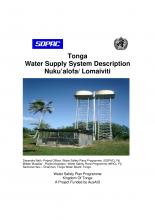Federated States of Micronesia National R2R Programme Document


Climate Change Resilience, Island and Ocean Ecosystems
GEF Pacific Ridge to Reef Programme
Given the close inter-connections between land, water and coastal systems in Small Island Developing States (SIDS), the integration of freshwater management with coastal area management is considered essential to foster effective cross-sectoral coordination int he planning and management of land, water and coastal uses. In Pacific SIDS, such integrated approaches to freshwater and coastal area management have been termed 'Ridge to Reef' to emphasise the inter-connections between the natural and social systems from the mountain 'ridges' of volcanic islands, through coastal watersheds and habitats, and across coastal lagoons to the fringing 'reef' environments associated with most Pacific SIDS. Inherent in the approach is the philosophy of cross-sectoral coordination in the planning and management of freshwater use, sanitation, wastewater treatment and pollution control, sustainable land use and forestry practices, balancing coastal livelihoods and biodiversity conservation, hazard risk reduction, and climate variability and change.

